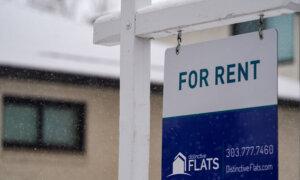
This article was originally published on Epoch Times - US. You can read the original article HERE
Meanwhile, the rental-vacancy rates have gone up, the highest rate in five years.
The rate of homeownership in the United States remained steady in the third quarter of this year while the rate of vacancy crept up, according to real estate listings website Realtor.
Both these metrics are known to have an influence over each other and provide information for investors to assess the value of properties and housing market conditions. Low vacancy rates usually indicate that people want to live in a particular building or region. Higher rates suggest the opposite: people have little to no interest.
The homeowner-vacancy rate was 1 percent in the third quarter, up from 0.8 percent in the same quarter last year. This figure “has been on a consistent decline since 2011 and has stayed at or below 1.0 percent since 2020 Q2 [second quarter], even as for-sale inventory has grown post-pandemic,” the report said.
Rental-vacancy rates grew to 6.9 percent, the highest since the first quarter of 2019. If the rate were to move up, it could further strengthen declining trends seen in median asking rents and multifamily construction starts, according to Realtor.
The report pointed out that the homeownership rate had peaked in fourth quarter 2004, falling thereafter and bottoming in 2016. It then grew in the following years, peaking in the second quarter of 2020, during the pandemic.
“Since the fourth quarter of 2020, the homeownership rate has hovered between 65.4 percent and 66.0 percent, a significantly lower rate than before the Great Recession,” it said.
“With housing inventory back to early 2020 levels, first-time homebuyers should have plenty of options, but they continue to face the challenges of affordability as listings prices have remained stubbornly high and mortgage rates have swung back up above 6.7 percent.”
Thirty-six percent of adults with less than $50,000 owned their homes, compared to 87 percent of adults with family incomes of $100,000 or more.
Millions of Vacant Homes
According to an Oct. 7 report by LendingTree, there were more than 5.6 million empty housing units across the largest 50 metropolitan areas in the United States last year. The vacancy rate was 7.37 percent, up slightly from the previous year.“Nearly half of all vacant units in the nation’s 50 largest metros sit empty because they’re waiting to be rented or they’re only used part of the year,” it said.
In Louisiana, New Orleans had the highest vacancy rate among metros, at 14.50 percent, followed by the Florida metros of Miami and Tampa, both of which had rates in excess of 11 percent. Nearly 600,000 housing units were empty in these three metros combined.
A key reason why properties remain empty was that owners were offering them for rent. Another factor is that some of these properties are used for seasonal, recreational, or other purposes.
“A house can be considered vacant even if it’s only empty for a relatively short time, like if it’s a vacation home not being used,” Channel said.
Homes could also be vacant because of personal reasons tied to the owner. For instance, an owner could be deciding what to do with the property—whether to sell it, rent it, or maintain it as is.
“Given the reasons why homes tend to sit vacant—and that vacancies tend to only be temporary—there isn’t much reason to conclude that the nation’s housing supply is anything but insufficient in the face of homebuyer and renter demand,” Channel said.
This article was originally published by Epoch Times - US. We only curate news from sources that align with the core values of our intended conservative audience. If you like the news you read here we encourage you to utilize the original sources for even more great news and opinions you can trust!












Comments